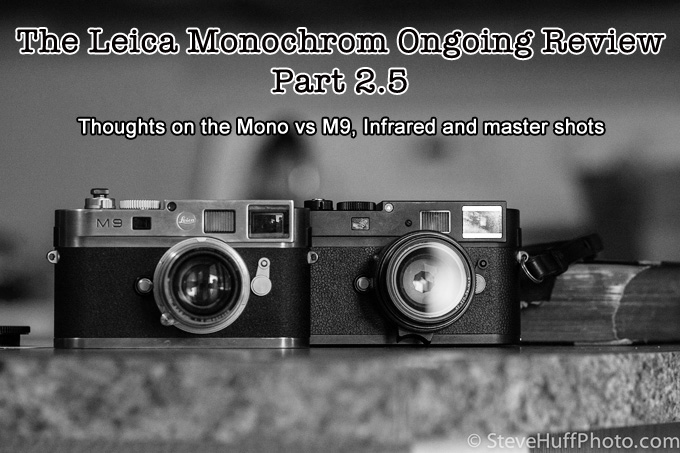
Leica Monochrom Ongoing Review part 2.5. More thoughts on the camera, on Leica in general and many more sample shots from this unique camera.
Part 3 is now up HERE!
It has been about a week since I have last written anything about the Monochrom. In part 2 of this ongoing review I wrote about the low light performance of the Monochrom as well as touched on the use of filters on the lens and in software while processing. In part 1 of the review I spoke about understanding the camera. Since then I have been shooting with the camera more and more and finding out that even after a few weeks of almost daily use I am not tired of seeing the gorgeous “Mono” files that come from this already “classic” tool.
I say already classic because as you all know, this is a black and white only camera body. Even if you come across a super cool scene in color, you can not shoot it in color. With the Monochrom it is all about “seeing” in Mono, something that I admit I am not 100% trained on just yet. Even so, I am having a wonderful change of pace shooting with it. It is like I have been transported back to a time without color film, color TV or color anything. Shooting this camera just feels nostalgic.
[ad#Adsense Blog Sq Embed Image]
I have also been having some fun shooting with a Hoya R72 IR filter, and yes, it works giving beautiful results. Finally, I have been really enjoying seeing what Kristian Dowling has been getting with his Monochrom so read on to see a couple of IR samples as well as Kristian’s breathtaking and amazing images with this camera.
Let me get one thing stated up front..this camera is indeed overpriced. There is just no way on earth it is actually worth $8,000 US dollars to me (to you maybe). Yes, it has the gorgeous and classic Leica build and styling and the solid feel as well as the feeling you get when shooting with a classic rangefinder but it is $8000 for a body only and at this price it is in reality reserved for those with an upper end income, and I get the feeling Leica wants to keep it like this. Kind of sad that there are so many who are lusting after this but know deep in their heart they could never afford it. When you add in the cost of a lens it gets really outrageous and beyond the scope of 90% of shooters.
But this is Leica my friends and it is who they have been for many years and they show no sign of changing their ways though the new M is actually reasonably priced IMO for a full featured Leica M, and that is one camera that I am very excited about because if Leica nailed the IQ and usability then for some it will be the last M they may ever buy. For others that camera was the M9 and for some it was the M3, M6, M7 or MP. I am not sure that the Monochrom is the last M anyone would buy just due to the limitations of shooting only in Monochrom. Then again a Monochrom and something like a NEX-6, OM-D or Fuji X-E1 would be a good combo as well if you do not want to break the bank.
Back to Leica. Over the past few years Leica has changed a bit. I have seen them go from a small struggling company who were making many bad choices in the digital age, even bordering in bankruptcy at one point, to a company enjoying huge success and growth. They went through many digital growing pains and if it were not for the M9, Leica would not be where they are today. The M9 was THE camera..it was their golden ticket. This camera, the “golden child” M9, changed the whole world of photography because it attracted so many new Rangefinder users, and this was good. The M9P that was released as a “new” old camera did not even come close to selling in the numbers that the M9 did, and this could be an issue for Leica. With so many happy M9 users how many will jump to this Monochrom or the new M? The new M could sell less than the M9 or blow it out of the water sales wise depending on user reports and experiences.
With the M9, It did not matter if you were a pro or hobbyist, the reason for shooting these cameras was clearly for the passion, the fun, the excitement and the pride you got from using such a precision and well made tool. It also happened to deliver the most gorgeous and unique image quality of any camera at the time when you used the right Leica lens. Lenses like the 50 Summilux ASPH, 35 Summilux and 90 Summicron. The Noctilux and even the classic 50 Summitar. Yes, it was expensive but it was more versatile than the Monochrom because it shot color or B&W. So many stretched their budgets to buy one, and many fell in love with the camera just as I did.
Leica came back in a big way in 2009 and I am a VERY humble guy but this time have to admit that my blog..THIS blog.. was at the forefront of the M9 rush. It was my favorite camera ever and it stayed by my side day after day. My M9 review has had over 3 million views and I have had THOUSANDS and THOUSANDS of e-mails over the past three years from those who have bought M9’s just due to my review and were sharing their story with me. I have heard heart warming stories as well as horror stories. Many Leica users flock here due to the my love of Leica and the images and stories shared by the many who submit their images. But I am the first to admit there are many cameras that can shoot beautiful photos and no one “needs” a Leica to do so. No..we do not need a Leica M, but many of use get so much pleasure from using one that in many ways, for some of us, it enriches our lives.
A bold statement for sure but it is true. I have met so many of you at workshops, events and all over the world and the one thing I see is consistent. There is a passion in those who shoot Leica that I just have not seen as much with other brands. Even though we can make gorgeous images with ANY camera, there is just something about a Leica that gets our hearts beating. A Leica may not be any better at preserving those precious memories than other cameras but to those who own one, it gives us something..something we may not be able to put our finger on exactly but it has some MOJO that other cameras can not match.
I admit to being in this group which is probably why I also am in love with the Monochrom even though I can get great results with any camera shooting B&W. So, is there a real difference between cameras when shooting in Monochom or converting color to B&W? That is what everyone wants to know, including me. Shooting a NEX-7 or OM-D can give you fantastic results but for those who have that love and passion and desire to shoot Leica it does not matter as shooting other cameras is nothing like shooting an M. So what is the point of doing such comparisons? Well, there will always be those who hate on Leica and those who hate on cameras that are NOT Leica. There is always a debate in life no matter what the topic of discussion which is always good to have. After shooting other cameras with the Mono I have no doubt that anyone could get an award winning B&W shot with just about any camera out today, but I will compare them so you can see what the Monochrom offers over the others as everything is not as black and white as it seems. But this will be in PART 3 next week 🙂
If you have not yet read part one and part two of this ongoing Monochrom review then you should 🙂 This is officially “part 2.5″ because part three was supposed to be the comparisons. I am not finished with those just yet so I added this in as an in between review post. After a while with this camera I am seriously enjoying it because it does have some serious charm. In past installments I spoke about how you can get any look you desire from this camera. Contrasty, flat, or however you like it. I also went around the internet and looked up over a thousand film images and after seeing some of the work from Kristian Dowling and his Monochrom I concluded that yes indeed, for me, this camera can easily and does easily take the place of any 35mm film. I will have those yelling at me over that statement but look at the key words..”for me”..it is what it is and nothing will change my mind.
Would I rather save $6500 and buy an M6 and hundreds of rolls of film? Me? No because that would limit me to whatever ASA is in my camera. It would limit me to 36 images per roll. It would cost me quite a bit of cash to have all of those processed and scanned. If I scanned myself I would have to spend money on a very good scanner and spend hours per roll scanning. Then they would need to be tweaked anyway. For what I shoot and my style I just do not have the desire to go through all of that again. Film has a special place, and I enjoy it every now and then but with this Monochrom available and in my hands I just would not go back to film except to shoot the occasional roll here and there.
A Quick Sneak Peek – Leica Monochrom vs Leica M9 at ISO 320 – Click for full 100% crop. OOC results are scary similar but noise is where it is at. THIS IS NOT FOR SHARPNESS! This was hand held, indoor low light. This is to show tonality and ISO at 320. ISO at 320 on the M9 = ISO 2000 on the MM.
–
Infrared with the Hoya R72 FIlter
Infrared photography is something I have always been interested in but never really tried it when shooting film. I experimented with it years ago with a Sony F707 digital camera and again with a Minolta Dimage 7 but was never happy with my results. So why not try it again? Not all cameras can shoot IR and many photographers end up converting their digital cameras so that can shoot like this.
Many have told me that you can not shoot IR with the Monochrom but I had to try. I bought a couple of IR filters and the one that gets me the results is the Hoya R72. I bought one to fit my 35 Lux FLE and gave it a shot. One thing to remember when shooting with these filters is that if you focus normally with your Monochrom your image will be severely back focused. It is a hit or miss and you will also need a tripod. The key is to focus a few feet in front of your subject. I have not shot too much with this filter yet but hope to do more soon.
Greens to white 🙂
So the Monochrom is basically a camera that will appeal to a select few. A few who have the funds to sink into it as well as the hardcore dedicated B&W shooters who salivate at the thought of a B&W only camera that allows them to concentrate on their vision more than anything else.
Part 3 will be up really soon with comparisons between the M9, OM-D, NEX, etc. The Mono with straight RAW files and the others with converted color files. The M9 is easily capable to shoot B&W but the main #1 difference between the M9 and Mono is the noise levels. ISO 320 on the M9 looks like ISO 2000 on the Mono. This opens up possibilities for night shooting but how will the new M be with noise? With ISO 6400 capability the new M may be really good at 3200 but the Mono goes up to 10,000 and is usable at that speed.
Those who are interested in the Mono just need to know it is a back to basics as you can get.
–
Some amazing Monochrom imagery by Kristian Dowling
Kristian and I have been chatting through e-mail for quite a while now and after he wrote the article about the Noctilux I was blown away with what he could do with an M. Just so happens he was out shooting the Monochrom as well and he has allowed me to share some of his images here. I am so itching to go take a trip with my Mono soon but Kristian is one of those photographers I respect, admire and hope to be as good as someday. You can check out his website HERE. These shots below are all MASTERFUL photographs.

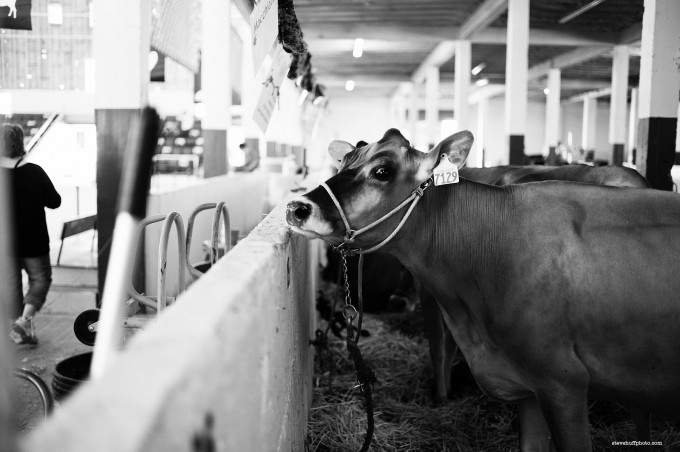
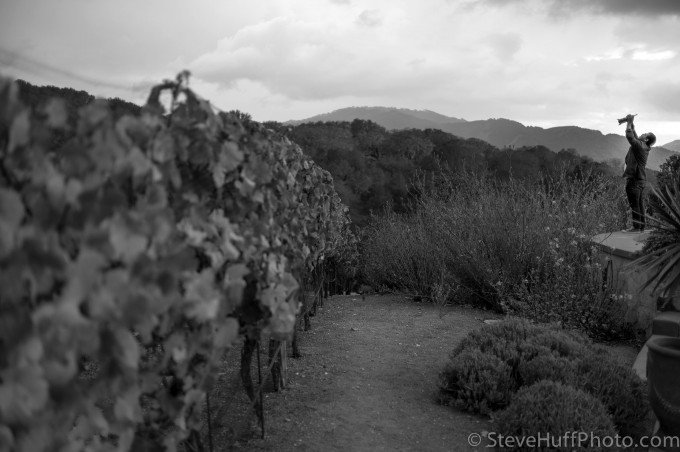
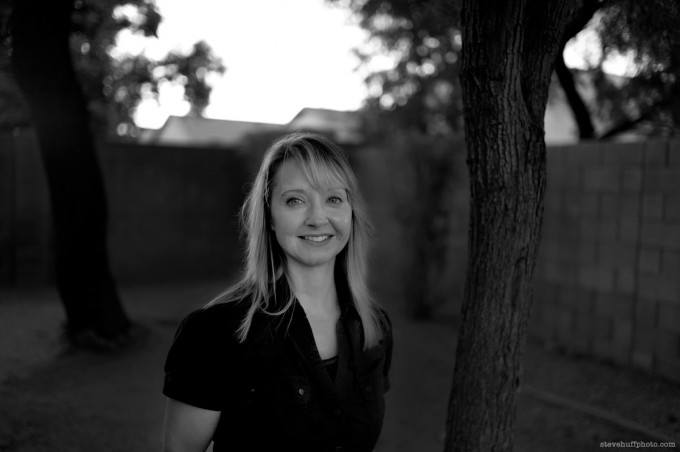
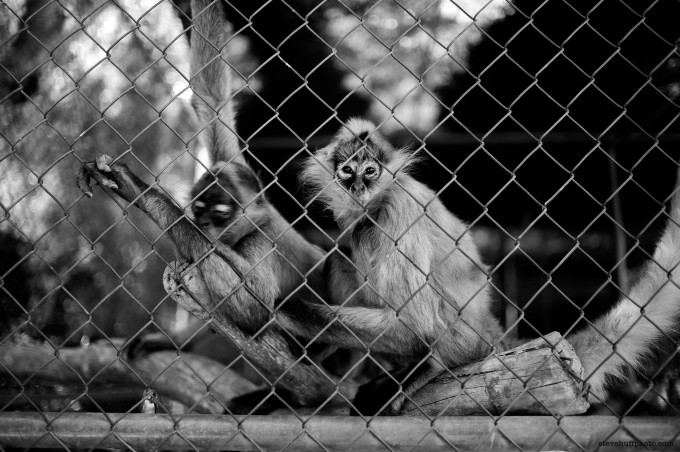
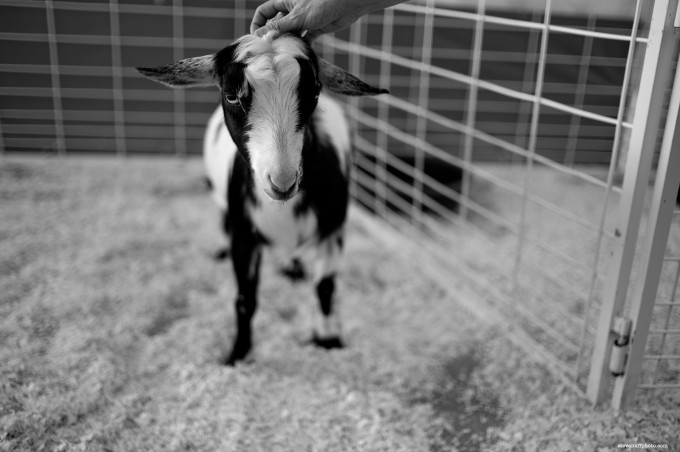
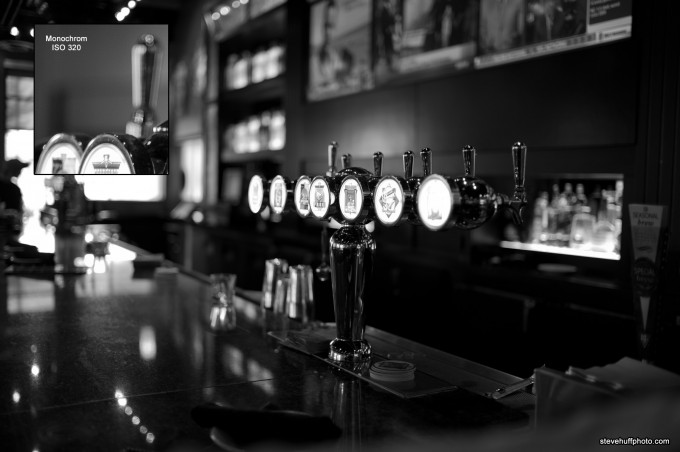
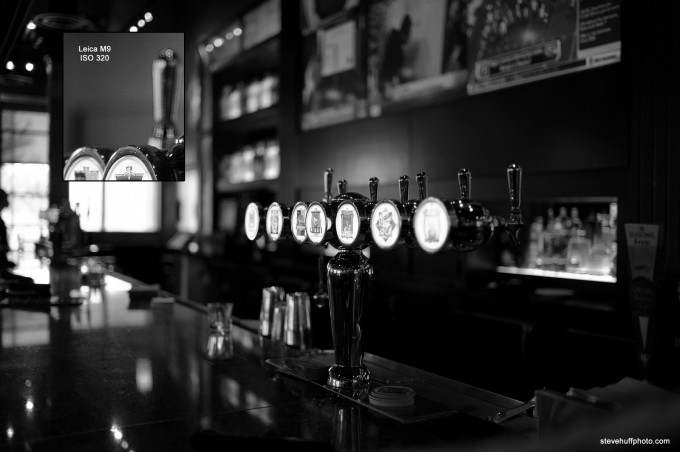

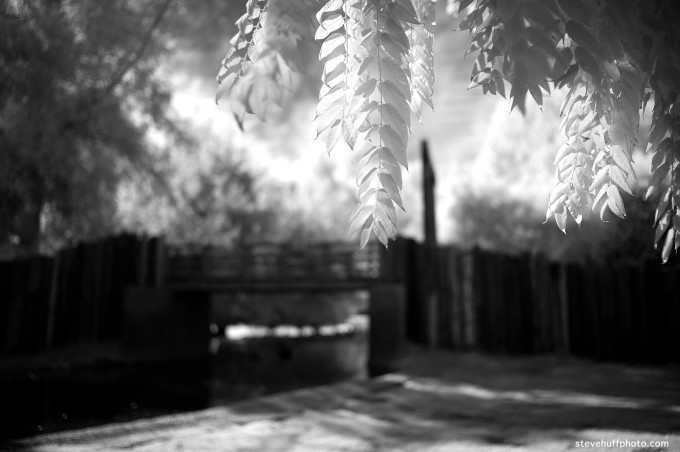
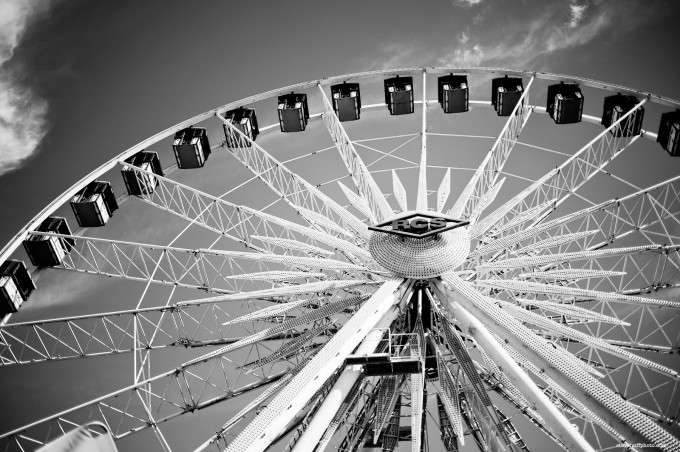
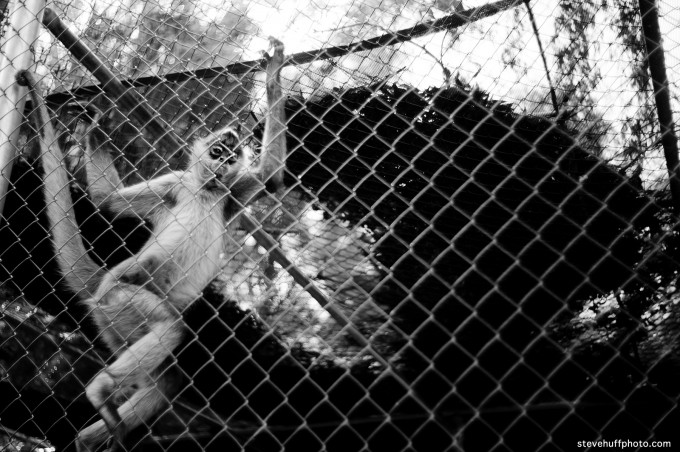
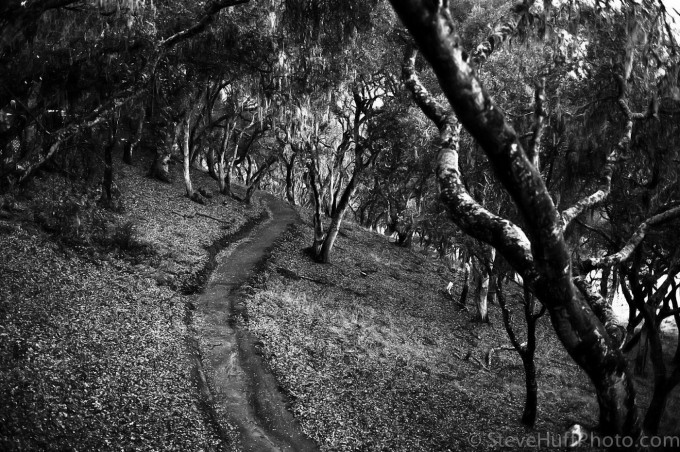
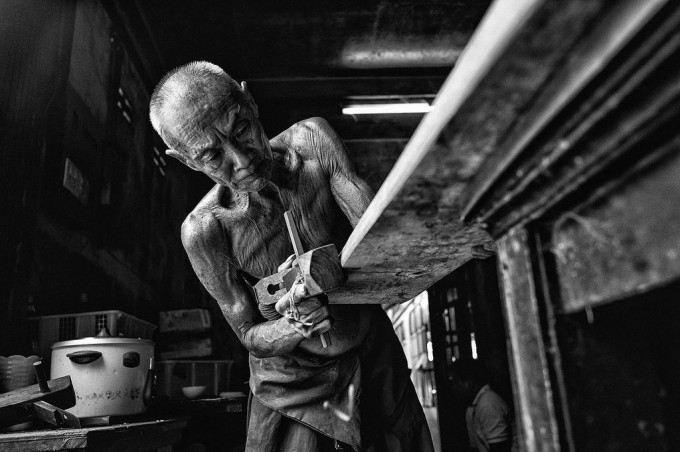

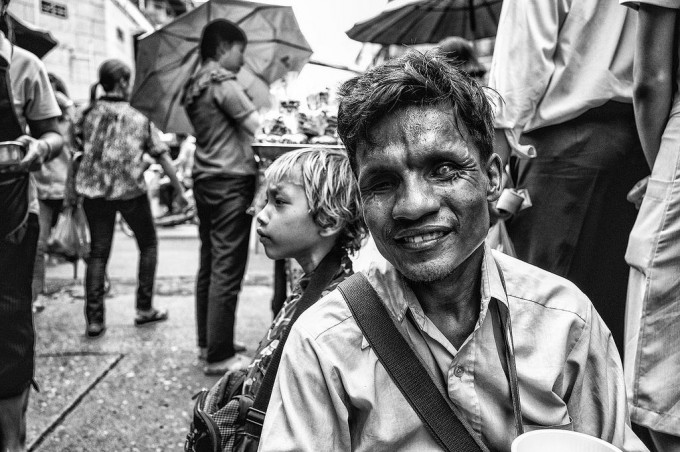

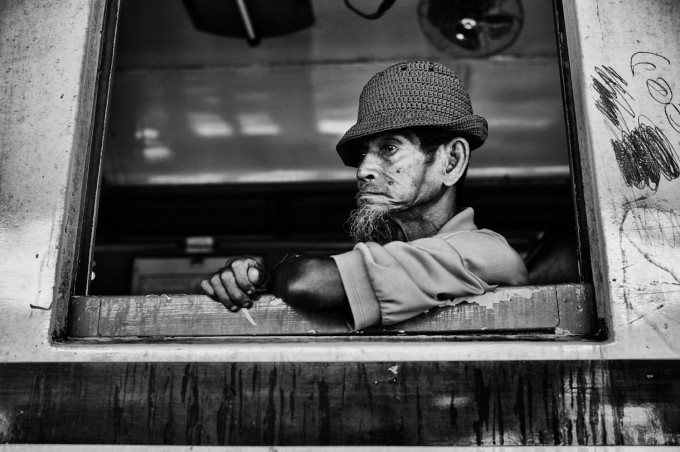
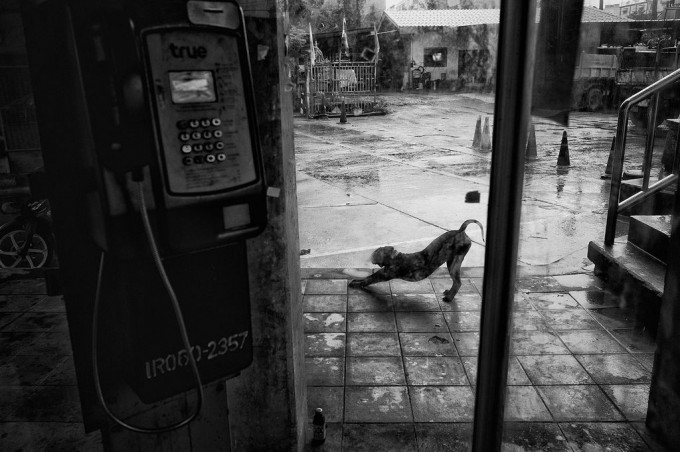

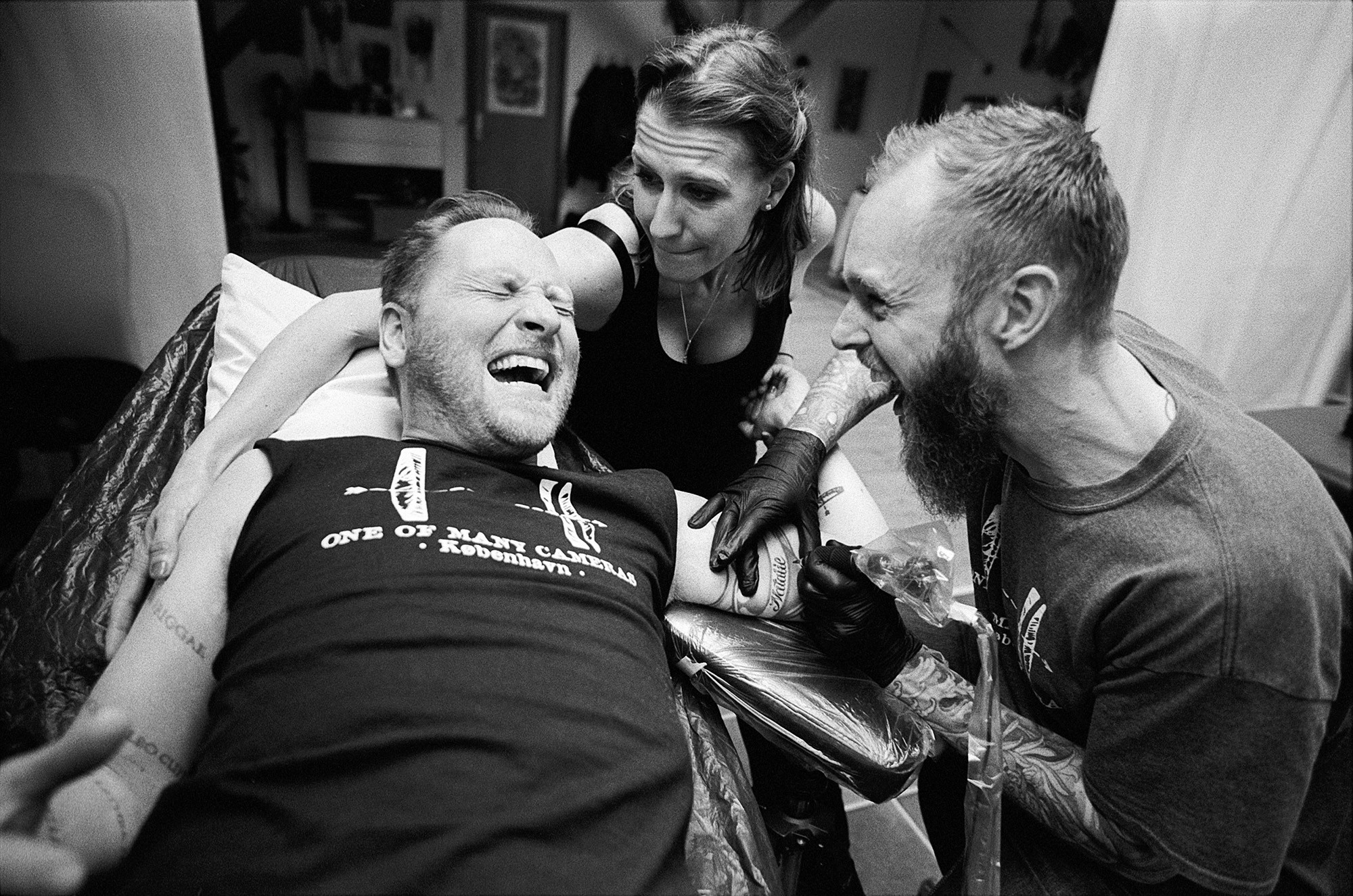
Reaching waaaaay back to this post – I’m curious whether you’ve tried these infrared experiments with the new Monochrom 246? What do those results look like? Waiting on delivery of mine and thinking about exploring IR with it.
Not yet but will soon 🙂
“and I am a VERY humble guy” in fact EXTREMELY humble – I’m probably the best in the world at being humble, if truth be told …
wonderful pics
great camera. i love the sharpness , the contrast , the shades of the B?W ( tonal range)
Great Part 2.5 Steve, I especially like the viewing wheel image. The resolution is simply amazing, I doubt an M9 will be able to match it in similar conditions but I’m looking forward to your Part 3 of the review for some resolution comparisons.
When Leica announced the MM I was intrigued, after two and 2.5 parts of your review that intrigue has now turned into Lust… That is not a good sign LOL. I can now see the MM is really for someone who LIVE and breath BW, emphasis on LIVE. Since I’m just a hobbyist, I cannot see myself pluck down 8 grand to get just an occasional BW fix, M9 or any other camera is perfectly fine for just that.
Like you said it’s overpriced for what it is. It might not be too much money for someone who makes a decent(very decent) living out of their gallery B&W prints but it will be just a statement item without being practical for 90% of the hobbyists out there. It’s like paying more for a stripped to the bone version of Porsche Boxter.
It occurs to me that one of the two current major innovators, Fuji or Sony, could really shake things up by bringing out a monochrome version of one of their excellent new cameras at a price that would be a fraction of the Leica, wouldn’t that be fun?
On another note, I loved that my Panasonic GF-1 had an auto film bracketing feature that I haven’t found in any other camera — a menu choice to automatically take a B&W shot bracketed between two color shots with different film simulations. I would imagine that most any camera could do this with a firmware change. I used that option a lot and often got some great mono shots “automatically”while shooting color.
Steve: any idea why this very useful feature has apparently been forgotten by manufacturers?
There was a lot of admiration from my part in the different episodes of this ongoing review.
First for the concept of this review. This camera really needs this, Steve. The MM is based on a great concept, and IMO all great work starts with a strong concept. I strongly believe that in the hands of the right photographer, this camera can enhance the creative process and bring the artist in the best possible mood to create great pictures.
One of those great creators surely is Kristian Dowling. I can only make a very deep and humble bow, and tell you that I love his work very much. Looking at his work often gives me an esthetic experience, comparable to when I look at a great sculpture. IMO Kristians work is so very right. I’d like to thank Kristian for his sympathy for this website.
Furhter, in this article there are some statements I very much would like to confirm. Like the one that many other camera’s can produce an award winning B&W shot. Although I disagree that anyone can produce such a picture. In fact, very few people can produce award winning shots. But those who can, can do it with quite some different camera’s. (I have no doubt, that this is exactly what you meant to say.) The thing is, the award goes to the artist, to the inspiration, to the performance. And the latter is mostly about seeing, deciding, timing, etc. The technical capabilities of the camera only play a very subordinate roll in this, giving the fact that there are so many very good camera’s on the market. But in the hands of a great artist, this MM can bring him even further in the right mood, to indeed strech his creativity to the limit. It’s the same as when a great pianist plays on a Yamaha or Kawai and plays a wonderfull Chopin Nocturne and then plays on a Steinway and experiences just a bit more inspiration, just a tiny bit more response. Is the Steinway worth so much more money? Certainly not if compared to how little more it offers. But for this artist it surely is! He’s simply looking for the ultimate creative experience and finds it with a Steinway, or the MM for that matter.
Another statement is that indeed the MM could be supplemented with a less expensive color camera, to keep finances under control at least a bit. I’d like to add something here. Imagine that one could use exactly the same lenses on both those camera’s… Wouldn’t that be very appealing? Imagine that more brands would make M-mount bodies… Imagine Sony would make an M-mount body with the RX1 sensor… Am I the only one that would find this extremely appealing?
Besides Kristian’s wonderfull pictures, the comparison pictures MM/M9 at 320 ISO is very interesting.
What’s important to me is the difference in grays. IMO the MM offers clearly more of those nuances. But I was surprised of how close the M9 comes really (apart from the horizontal banding in the M9 picture – I don’t know what to think of that…). I’m really curious for a comparison between the MM and the new M (and also the RX1 – just to know how good this one really is…). As far as now, I’m more then ever convinced that the MM is for the very happy few. For the one that’s really into B&W, the one that really wants the utmost in grays, the one for whom the money plays a subordinate roll, the one that yearns for the greatest possible tool, the one that above all craves for the ultimate creative experience…
Anyway, this is all only my personal opinion. But one thing is sure, I love this ongoing review, I love to think about those issues and, well… I simply love this site!
The MM is missing the soft ‘shoulders’ in the transition areas from pure white to darker areas. It’s very easy to recognize so I wonder why only a few people do see this. There are so many pics in the net which have the same burned out areas, especially skin tones and other bright surfaces.
Another nasty effect which is visible in Kristians pic of the half blind man are the grey outlines of subject in the left area of the photograph. In discussions people think that this may happen due to heavy PP.
When I compare the MM with b&w film the sensor will fail a lot more but in terms of digital the M9 is the better buy in my eyes….
I’m not in any way an expert in anything related to photographing or cameras, but am learning and loving taking pictures with my om-d. I’m however a great sceptic of many things and would like to see a “semi scientific” double blind test: How many people would actually be able to tell the difference from the Leica monochrome and pics taken with some other (presumably cheeper) camera, by some person who knows what he/she is doing better than me, with suitable lenses and some profiles in Lightroom etc.
Is there a real difference that more than 50% of photographers would really see, or is it a case of diminishing returns like when people claim aps-c is superior to om-d, but can’t tell what pic is from what camera when faced with a challenge…
That is coming in the next installment… 🙂 A blind test..and to be honest I do not think anyone will tell the diff between the M9 and Mono, in good light. In low light YES. Between the OM-D and Mono? There is a difference in the B&W shades/tones but that doesnt mean it is worse, just different. But it will be interesting to see 🙂 Also, as I have previously stated a few times..shooting a Leica is about the experience just as much as the IQ. You do not get that same experience from ANY other camera. Period. Also, if I posted full size samples the differences would EASILY be seen which means in print, if you print large, the Leica would be superior.
Yes I full agree about the possiblity of the different (more enjoyable) experience shooting with something the user really enjoys himself/herself. I’m one to admit myself: Most of my purchase decisions (not only cameras) are not only based on technical merits but also very much on the feeling, aesthetics etc., it’s human nature to want to buy the thing that strikes as the most pleasing to the eye and senses if the rational mind can also find the reasons to back up this “unconcious” decision. (The reason men sometimes buy sports cars instead of practical station wagons) 🙂
As I’m reading and learning about cameras and taking better photos I often think, how much extra can I achieve for the extra dollar. Many years ago I read about a sceptic James Randi, who promised 1 million dollars to anybody who could prove that pair of speaker cables costing 7000 where distinguishable (better of worse) from pair of cables that cost 100. Nobody including the reporter who had previosly reviewed the cables, took on the challenge, because as scientist know, all that matters is that both of the cables are made of copper and human ear can not notice the difference(any human ear). Here is link about for those who are interested: http://gizmodo.com/305549/james-randi-offers-1-million-if-audiophiles-can-prove-7250-speaker-cables-are-better
Cameras are not speaker cables and I believe there is a real difference, I’m just interested how big is it and could a talented photographer / post processing expert maybe choose some cheper camera and create some lightroom presets that would even fool experts – make the photos so similiar (not better or worse) that nobody could tell them apart (if possible dof differences are eliminated). I’m sure, my eyes is not so talented I could tell the difference, even with this one: http://blog.htc.com/best-camera-phone/ I only scored 6/10 with 5/10 being the median answer with luck alone(50% chance of getting it right with guessing). I would like to see someone make this kind of challenge for the OM-D vs. FF/aps-c, Dof eliminated and maybe below ISO 1600, how many have the eyes to spot the difference and at what print size..
One more comment regarding the clipping.
IMO usable dynamic range has a lot to do with the noise behaviour of a camera. The lower the noise the better one can usually bring up shaddows.
For this reason I am pretty sure that the “usable” dynamic range with the MM should be more than that from the M9.
None any of these pics look natural..
LOL, they are in B&W for crying out loud.
Dang it, that was supposed to be a reply to dgd.
Oh, I like it more out of context
I’m guessing you don’t spend much time around cows. That’s just how that breed (Jersey) looks – it’s their short coat that makes them look “plastic” as you say – it’s not any processing on Steve’s part. In real life, of course, these cows are brown, not black and white. =o)
Come to Texas. I’ll show you around. Let you take some pictures of cows. Let you ride one, too, if you want.
So many varieties of cows. A person cannot feasibly have been around all of them.
Same cow photographed with Canon 1d, Nikon D1h, Fuji S2, Olympus E1 i would have looked less plastic.,
Its just how modern sensors are … including MM … they try to make them as perfect as possible which can make them look plastic in some scenarios.
Oh dear people, that’s a GOAT, not a cow!
The COW is at the top of the page. This is what is being referred to, not the goat midway down.
The gentleman carpenter his body looks like it is hewn out of wood.
Absolutely brilliant photo.
The others from CDowling on this page there’s hundred of such taken every day by mobile phones, p&s.
I dont think just because it is taken with a leica makes them “masterful” in any way.
Nor just because of a persons reputation should an photo by them automatically become “masterful” .
The woodland photo shows what the MM can do. (same shot with leica M9 if looked at 100% would have shown artefacts due to bayer demosaicing).
The cow looks plastic. Is it the processing?
Lol… care to share your images? Post a link here so we can see them. I always find it funny when you have someone who harshly judges others work but they always, well..98% of the time fail to show their own. Kristian’s shots, to me, are masterful..regardless of any reputation. I look at the photos, not the person and all are quite superb. BTW, the cow test shot was slightly mis-focused which is easily seen by looking at the photo – so if you look at his face, which is not 100% in focus, it is blurry due to mis-focus. There has been zero processing done on these.
Dude on flicr there’s hundreds of street photos taken by mobiles, p&s which are just the same as the Christian Dowling’ posted here.
Nothing masterful about these or Chris Dowling’s except the Elderly gentleman wood working which is a brilliant photo.
No harsh judgement, just a dose of balance,
(psThe cow looks plastic processing or not focus or not).
Sorry, I can’t see the #2 and saying it is a banal photo !
I don’t want to know what is the gear, it is a photographic act.
The girl on the back left is the soul of the photo,
I don’t think there is so much photo over the net as good as this one, take your phone or whatever you want and compare to this one.
Just IMHO it is easier with an M.
DS
Flicr photobucket has many such.
They all are fine photos.
Nothing masterful about them.
ps. i dont get why people cant just appreciate a photo without getting into adulation, eulogy.
It is the person being photographed who makes the photo, without this person (object, landscape) what would the photographer photograph ?
I know about myself my photos are nothing and i didn’t even make the instrument im using nor even the software nor computer.
Really the photographer is the least.
A bit of reality check & humbleness would go a long way.
Interesting debate, Dgd.
No I am not getting into adulation, the #2 is an example of very good one and it draw attention.
The point : “It is the person being photographed …”, I agree when you have an emotional link with the person like wife, friends, etc.
But I don’t agree, the photograph makes the photo, you know if many photographers make the same photo at the same moment of the same subject, no one will be the same.
Yes the photographer has to be humble, but not vanishe.
A photograph is made of decisions and choices among so many parameters that the possibilities are almost inifinite, that’s why we all continue having pleasure and having interest into making photographs.
DS
If the photographer is the last so why images from same places, objects and persons looks so different? Of course photography is not about photographers (only), but you can say photographer is the last… photography is about the way in which an artist called photographer sees life, it’s a whole. May be a bad photographer could shot the man with the wood from other angle and don’t get those textures that link his skin with the wood, something very poetic indeed. It’s the decision of the photographer that makes this picture interesting. To give credit to the photographer is not adulation, it’s only justice. Photography is an art and in these days people forget difficulties of this art, it’s a matter of justice to remember that behind every picture there is somebody’s efforts and generally hard work, maybe a lifetime work.
There is a mistake in my comment.. in the third line one must read “but you can’t say” instead of “but you can say”. Sorry for this.
I dont know about you but where i live plastic cows are not that big. Should be a dead giveaway, Mr. Wet Blanket Guy. Sheesh……some expert.
lol Steve, he is clearly trolling you can tell he is spelling Kristian’s name wrong on purpose constantly. I have all the iPhones and yes they are great but they don’t come within a mile of a proper camera. We see this not only in camera discussions, but the same people who say that a japanese import is faster and a better deal than a porsche/ferrari. jealously is ugly isn’t it.
This is one my fav MM shots from Kristian. Can someone please duplicate it on their iPhone, I can’t wait!
http://www.flickr.com/photos/52028515@N05/7932679500/in/photostream
To Kristian Dowling
Kristian,a difficult question,……..have you regretted at all that after taking a photo that you really liked that it might have been nice to have seen it on trix.
Hi Neil, no not at all. I love Tri-X and especially Sebastiao Salgado’s work with the medium, but now I have a ‘film’ that can look similar, and in some ways better than Tri-X, but extend from ISO 320-10,000 with the press of a button and turn of a wheel. Also, the files are very robust, and have a lot of range when processing – that flexibility is priceless.
thank you for the comprehensive article on the MM…
also…as per:
“I love Tri-X and especially Sebastiao Salgado’s work…”
does anyone know of a link to SS’s tri-x work?
Best,
Dean
I have a question about the two pictures of the bar. If you look at the windows on the far left, the monochrome is clipped and has lost all detail. The M9 still shows some details of the windows. Are the exposures for the M9 and monochrome the same? Do readers think that the monochrome is overexposed (while the M9 is not), and would improve with a lower exposure? Or is it easier to avoid clipping on the M9 since not all 3 colors will be clipped? Does this mean that the M9 has a larger dynamic range since all 3 colors will not clip at the same point?
I can certainly appreciate the higher ISO capability but I’m just not seeing the difference here for all the talk about “tones”.
For me the M9 still rules.
Wow! Impressive images from Kristian. I still think that it can be achieved with BW conversion too.
awesome Steve, I am really jonesing for this now though 🙁
While I understand the concept of the MM, and I’d surely buy one if I was a major B&W shooter, I often ADD grain to my photos when they’re too smooth, so I’m not sure that the extra low light performance of the MM is all that necessary for me, and I’ll stick with my M9.
I think the M9 is still the camera to look for from Leica. They’re going around $4k used in good shape, which is starting to almost look affordable…at least in terms of Leica hardware.
p.s. good subject matter, that creates a nice variety of values for a black and white image will ALWAYS make a nice black and white photo. To me, that’s what makes a nice black and white photo…being able to see something in color, that will produce this great range of lights and darks. Doing that requires your eye, mono. omd, nex, m9, m3….makes no matter.
again, just my .02..which I guess is now .04 HA
I think this camera is really cool but I think your images out of the OMD are better IN MY OPINION. And also, IN MY OPINION, the fact that you need a 3.5 part review of the camera tells me that you are trying to sell yourself on it. These Mono reviews read kind of like a daily affirmation “I love my life…today is a great day”…while being unemployed and your wife just left you. LOL maybe that’s dramatic but you know what I mean.
Is it awesome, yeah….but for me, the images aren’t spectacular in any special way. You’ve taken better shots with lesser cameras. Nothing wrong with it, if you can afford it, it would certainly TRAIN YOUR EYE for black and white shooting. But as for the image quality, I don’t see any magic in there that the M9/OMD couldn’t do.
JUST MY .02!!!!
Well to be fair I have not really went anywhere with the Mono yet, just around my house. No shoots, no exotic locations… 🙂 The only reason I did an ongoing review is because I had 20+ emails on the day I said the review would be a few weeks from people asking me to do a rolling review so I post what I get as I get it. That is the ONLY reason. I am not trying to sell myself on anything, I already bought it and enjoy it. Of course, as I already stated, anyone can take B&W images with ANY camera and get great results. This is basically a HIGH ISO M9 without color. That is the bottom line. But to say I took better images with a camera I have been shooting for 6 months and have taken on several trips is a but premature 🙂 As shown by Kristian, the MM is a highly capable camera. I feel for B&W it is more so than an M9 or OM-D just simply due to the fact of it’s high ISO capabilities which beat the M9 and OM-D easily.
But it takes a special person to want to shoot B&W only and to have this as their main camera. Many do, and many are enjoying the hell out of it and to me, that is the most important part. I still love my OM-D and am looking forward to a long term review of the Sony RX1 (which I should get mid November) AND taking a big long trip with my Mono and new M when it comes out.
All I am doing in the review is showing samples, showing ISO capabilities, showing detail and tonality..not trying to show works of art.
Thanks for reading.
Yeah of course…your totally right. I do like the m9 bar image better, but you know what it’s whatever. Part of enjoying photography is the tools you get to use, the TOYS. Nothing wrong with enjoying this particular toy!!! Damn near every modern day digital camera is SOOOOO much better than most modern day digital camera users it’s crazy!
Love your reviews BRUTHA…keep it up and enjoy your super cool new black and white “toy”…it’s a bit expensive for a toy. But this is the only difference between men and boys right?
Wow Steve – you have a ferris wheel, monkeys and a bar at your house? That must be one big house!! :))
Kidding aside – thank you for doing a rolling review on this camera, I very much appreciate the time and effort you have put into doing this review.
When I first learned that Leica was introducing this camera, I was extremely excited, albeit not about the price. FOR ME, BW is something that I really love and, in fact, I pretty much convert everything I take into BW. I also love my M9, but its lack of high ISO capability has always been a frustration for me. While noise/grain, can be added in pp, its impossible to get rid of it if it’s already there. As such, rather than seeing the MM as being limiting, at least in my opinion, it actually provides flexibility.
Some will certainly say to me, if you love BW THAT much, then shoot film – I have and still do – I’ve used a Mamiya 645 and I also own an M7. But there’s several things that irritate me about film – I hate developing, I can never seem to avoid dust on the negatives no matter what and I’m stuck with one ISO and any point in time. And, as you have previously noted, negatives require just as much pp as a digital image cause they always come out flat.
Obviously, shooting predominantly in BW is not for everyone – but for me, it’s my modus operandi, so FOR ME, this is THE camera. Your comments, sample pics and this review, as well as comments from actual users like Kristian have been extremely useful in helping me determine what I need to sacrifice and scrimp on to get this camera :))
Best regards,
Thanks Steve for taking the trouble to do IR on the MM, the shots you took certainly answer my query to the IR capability of the camera, which looks very promising.
I have been using the M8.2 for IR and really enjoy the effect, except for the grain on making A3 size prints, so the MM may provide a solution, albeit a very expensive one.
I do wonder why you seem to emphasise the point that your were using Hoya R72 filter, does it mean that you have tried other IR filters like the B+W 092 and not getting a usable result?
Thank you for your good work, cheers from Down Under.
No problem. Hoping to do more. I mentioned the Hoya because that was the one I used. The B+W was sold out so went with the Hoya and it seems to work well. Thanks for reading!
Wow, awesome set of images.
Great post Steve.
Thanks! Also, thanks to Kristian for those awesome images.
I feel like some of your blog posts about lecia are unhealthy for a poor high school student… now all want is to hold a leica and shoot with one haha. Just the opportunity would be nice.
Nice rolling review Steve. I really think the Mono is the camera Leica needed, especially in the lead up to the new M. It’s a camera with very little compromise. The only things I find shortcoming are the battery life and delay between shots at times due to the slow processing. The poor LCD is the least of my concerns, though it is pretty miserable for Leica to have continued it, especially after the M8.
Keep up the great work Steve!
Kristian
Thanks Kristian, and especially for letting me post some of your images. They are the most powerful I have seen from the MM yet.
Fantastic images, Kristian!
The MM looks interesting, but for me it would only be a phase camera – nothing to use as a primary tool. I like the ability to shoot in color and lets face it, some photos just look better in color than b/w. The M9 is sharp enough, and I don’t mind grainy black and white’s when pushing the iso up to higher levels. Great shots and nice files, but not worth the cost/limitations. I’ll admire the work of those who use the MM, but have zero interest in owning one myself even though price isn’t the issue – this from a sufferer of serious gear acquisition syndrome.
Looking at the bar room shots it seems clear that the M9 produced a wider more extended dynamic range but less contrast. The Mono is deeper in the blacks but also blew out the whites. In the M9 you can see the window panes but with the Mono the whites are blown out. The M9 has much more black detail and in the Mono the detail is lost to denser blacks. But the Mono could have captured more dynamic range, but care must be taken as many users have said that the Mono clips whites easily and you must always underexpose every shot by a third of a stop or so for safety. For $8000 I would expect the mono to have advanced light metering that would prevent blown out highlights, but since it does not have a live preview how can the user even know this is happening. Again for $8000 this should not even be hinted at as being an issue, yet there it is. The lowly $999 OMD offers the ability to be hand tune each metering style to over or underexpose by any factor with live view of clipped highlights and so on to an almost infinity of user desires and configurations, can the same be said of the Mono?
Since the MM doesn’t have life view/EVF it can not show you blown highlights before taking the image.
I am glad there are not close to infinity configurations possible with the MM because simplicity and straight forward design is one of the reasons why I get along so got with the Ms.
If one has used Leica Ms for some time (and the MM is not so much different than previous bodies) exposure is pretty predictable and not difficult to master.
If one is looking for “perfect exposure without having to think about anything” IMO Nikon is the best bet.
Couldn’t agree more. Love the irony that a color sensor is better at reproducing B&W film than a B&W sensor.
It’s clear that the only advantages here are high ISO and resolution. This is perhaps the ultimate spy camera? Definitely, and most positively not a replacement for B&W film though. There is nothing that you can do with this camera, in B&W terms, that you can’t do with the M9. Contrast, Grain are equally adjustable on M9 files, and dynamic range is NOTICEABLY BETTER on M9 files, as shown above.
The more I think about it, the sillier this camera seems. All it really does is force people to think in black and white. It’s a shame that for a few thousand less these people can’t simply think for themselves. I wouldn’t even pay $1,000 for this thing.
I think the Monochrome is their “Halo” camera. Honestly I think this camera is going to be worth less than M9 prices a few years down the road when sensor technologies mature. But for now, this camera is the undisputed king for digital rangefinder BW in the 35mm format.
Thanks for this ongoing review. I find myself in the strange position that I would really love to have a B&W only digital camera, but it really does *not* need to be a Leica (as beautiful and gorgeous as they are).
I think, something like e.g. a B&W only Olympus MFT camera would be a really nice addition to the market…!! Even if it also came at a 70% price premium, as the MM does over the M9….
Thomas
Nice overview. For me, the MM is all about the challenge of seeing in new ways, and processing in different ways. It’s a camera of many possibilites, and it allows the M shooter to capture images in the dark. Sure, I miss color at times when using the Monochrom, but I do feel that it does what it is supposed to do very, very well. I hope to improve my skills in using it and take it back to color with the M9…
I too am waiting to see what the new M is capable of, but I do not anticipate selling the MM to get an M…..if the MM truly can equal the M9 at base ISO and with pixel sharpness and color depth, then I could see a reason to upgrade, but I am not yet sure…waiting for images to review…
Quote:’The M9P that was released as a “new” old camera did not even come close to selling in the numbers that the M9 did, and this could be an issue for Leica. With so many happy M9 users how many will jump to this Monochrom or the new M?’
Steve, first off the M9P did not sell anywhere near the numbers the M9 did because it was basically the same camera in a nicer looking package for a hell of a lot more money. As for happy M9 users jumping for the new M….it’s safe to say that many are jumping ship as M9’s are spring up in the used market everywhere right now for as little as $4000.
With that said, I am lurking in the background waiting for used M9’s to hit $3500 and I will buy one:)
Of course that is why but there have been tens of thousands of M9’s sold. How many are on the used market? Sure many will jump ship but I think the M will not sell as many as the M9 did because many are going to stick with the M9. Just my opinion.
You may be right Steve, the M may not sell nearly as well as the M9. Then again…..there may be a flood of people who have been frustrated with the outdated tech of the M9 and who were waiting for the M. There will also be the collectors and uber wealthy who will buy an M because they don’t care about the cost.
I guess time will tell, but either way I am looking forward to finally buying an M9 at a much reduced price:)
Yea, no one really knows. I cant wait to test the new M as I am curious if it will retain the same feel of the M9 files. Time will telL!
Agree with those who say an M9 is plenty sharp enough, and I still think the MM clips highlights where film would retain some information.
Still appreciate the insights Steve, and if it inspires you, than it’s worth it to you! Glad to see you’re having such a blast.
Hi Steve!
Nice part 2.5…looking forward to your comparison with other cameras and your passion for the MM is indeed readable in those lines here.
😉
I long for one of these, I really really like it, but like you said it IS overpriced. Too bad…I am glad you are enjoying it though!
I am happy with my E-P3 and I am sure I will be happier when I upgrade to OM-D 🙂
Great images, the ones from Kristian are amazing.
Simple for me. I like the M9 rendering in the bar much better. AND sooner or later you will see something that just SCREAMS for color. Get the best of both worlds. And I will say this- I have been a photographer for 40+ years and have prints from old Nikon Ftn’s, Rollei 2.8E TLR’s, Mamiyas, etc, and I can at this point duplicate the look of ANY of them with almost any top notch digital camera, rangefinder or otherwise. Go shoot and embrace digital. I personally never judge a camera or lens until I have a picture hanging on the wall. Thats where the rubber meets the road.
There is more to film than just the “look” of which your digital post-processing will always be a replica of the real thing. It’s just not the same. Also for some it’s the experience and the tangible nature of analog media. I’m sure you don’t have a turntable either but I like listening to vinyl for the very same reason. Not all the time….I like digital tunes as well but sometimes nothing beats a record.
Actually Jonny I do have a turntable. I have a 70’s stereo setup with a Yamaha A810 integrated amp a Pioneer PL 35 turntable and a pair of 1971 original advent speakers. I do understand your enjoyment of the process of developing your film, etc. Thats a perfect reason to stay with film.
Thanks Cory I actually have both I couldn’t imagine just having film at this stage it’s just nice to have it as part of the whole process.
In addition to the “look” of film, I also loke the actual “smell” of film…LOL
Ah, man. I will never have the money and I so want the monochrom Leica. It is easy to pick out the mono in the mono vs 9 photos in the bar scene. So very nice.
BakRD, Steve says up front not to look at the sharpness; hand held, low light, the photos are to compare the tonal range and smoothness of the cameras. You can add contrast and grain to the mono. You cannot successfully go from a contrasty image to a less contrasty image nor can you remove noise without loss of detail. There are clear advantages to the monochrom Leica.
Thanks, Johnhs!
Great article Steve!
I haven’t seen as many comparison images as I would have liked but the two you provided are quite insightful. While I was quite apprehensive about welcoming the Mono as a revolutionary camera – as opposed to a remade M9 – you have proved me wrong! The dynamic range on the Mono is significantly better than that of the M9 (OOC). I have no doubt that both have the capability to produce stunning images, especially in the right hands, but the Mono seems to have a little more of a “glow” about it.
I can’t justify the purchase but as you mentioned, this works for many people and I am quickly going from skeptic to appreciator.
-CM
Steve, you know,
when you are a putting the Mono file vs M9 file I seem to think the M9 one is sharper, a bit more contrasty and just a little more noisy.
I think I’d chose the M9 based on these two images.. Hmm…
I too, prefer the M9 over the M!
I am not into the sharpest image (I rather go for the moment) and I do like the concept of being able to shoot BW only, but they say because there is no color filter, the Mono is supposed to be sharper. Maybe these were just not the best images to compare sharpness, if you were comparing sharpness at all..
The Mono is backfocussed (therefore not as sharp).
The M9 shows heavy horizontal banding (considering it’s at ISO 320). Try the new Firmware.
Yes I noticed that banding too. I wasn’t sure if it was my monitor.
Steve,
thanks!
Well ….. so far so …no…. after review milestone 2.5 as you say
I think, as you say too, the Monochom will be for the very few…
For me I am quit happy with M9 and Lightroom 4 and Silver Efex 2 in turning RAW/DNG to Monochrome.
Maybe not as sharp or detailed…so what, its sharp enough…and far more detailed than a scanned B/W negative..
So I think after review milestone 3.0 you find out what you already new… NIce but not for most of us,
even if you have the Dollars to spend.
It looks like Kristian is one of the few who have mastered the Monochrom technically. These are impressive B&W images, not to mention great images, just in general. It gives me hope that this camera may indeed live up to its promise. Unfortunately, I still can’t afford one LOL.